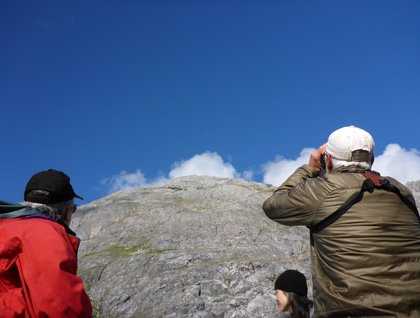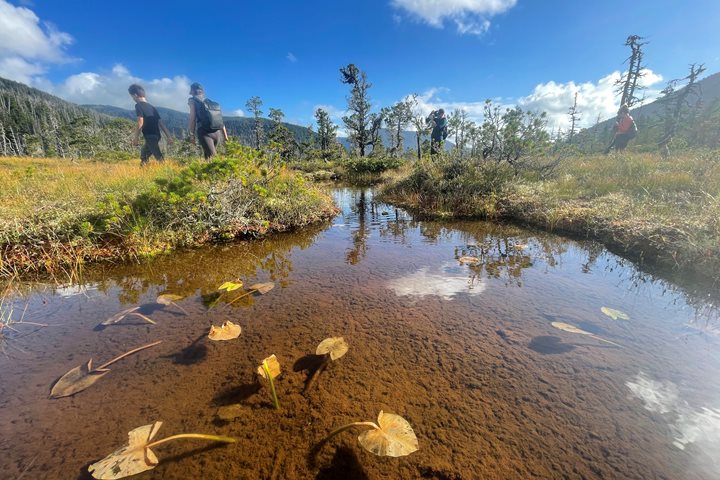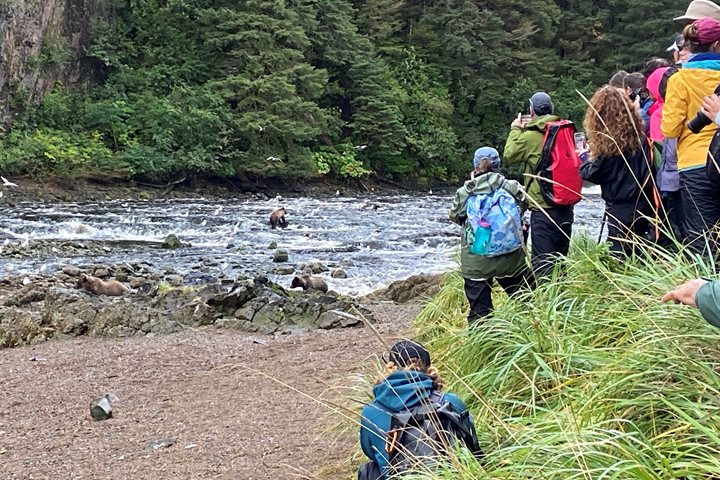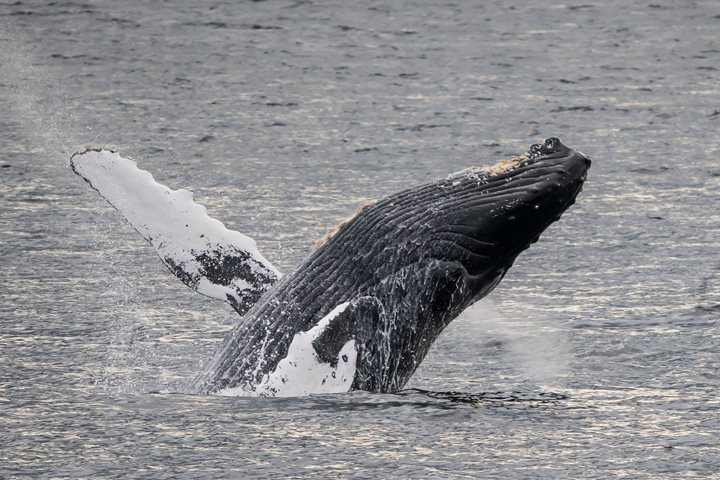Waking this morning in Glacier Bay, we peered out into the characteristic overcast sky and persistent drizzle from the comfort of the lounge. We were joined there by two wonderful guests: John, a ranger from Glacier Bay National Park, and William, our cultural interpreter. John recounted the adventures of early European explorers of this region such as Vitus Bering, George Vancouver, and John Muir; William spoke of a deeper history, that of his people’s relationship with this land. He is Huna Tlingit (pronounced “KLIN-kit,” and according to William, if you spit you’re saying it right). William’s ancestors occupied the area that is now Glacier Bay for millennia, until ice surged in what scientists call the Little Ice Age, driving them out of their homeland. Though much of their land is now water, filled by the ocean in the wake of glacial retreat, it was clear listening to William that the Tlingit spiritual ties to the place are none diminished.
We were delighted to have William aboard for the day, for witnessing the parade of wildlife. It was easy for us all to feel the spiritual nature of Glacier Bay. It started with South Marble Island, where hundreds of Steller sea lions postured and growled, and seabirds perched on every inch of rock that was shy of vertical. Gloomy Knob, though earning its name with tendrils of fog across its face, was clear enough for the group to spot mountain goats foraging on the steep granite, far from predators in the safety of the mountains. Or so we thought, until, circling around the far side of Gloomy, we encountered a mother brown bear traversing the cliffs with her three cubs-of-the-year. Murmurs came from the gathered crowd on-deck: “So steep!” “That’s quite a climb to find some berries.” “She deserves a standing ovation if she gets all three of those cubs to the top!”
At the westernmost end of Glacier Bay’s 65-mile extent, we parked in front of Johns Hopkins glacier, watching countless harbor seals resting on icebergs in the placid water. But the calm wouldn’t last long. The eastern side of the glacial face began to deteriorate, releasing ice chunks bit-by-bit. Naturalist Mike watched it avidly – “There’s some more… and a little more… keep watching, it’s getting ready for a big one over there…” Ponderously, silently, many tons of blue ice plummeted towards the water. The slow fall of the ice, and the long delay of its sound, told of the scale of what we’d just witnessed: a glacial face over 200 feet high, collapsing. The thunderous noise came first, then the waves, rocking our ship in a slow but powerful rhythm. Through it all, the harbor seals lay calmly.
Exploring Geikie Inlet on our way back down the bay, jet-black dorsal fins cut the water. Orcas! We came about in the ship and cruised along with the five of them. They seemed unhurried, and it seemed only right for us to do the same, slowing the ship and delaying dinner. Perhaps it was because the sun had come out, encouraging us to enjoy every moment on deck before waving goodbye to Glacier Bay.







